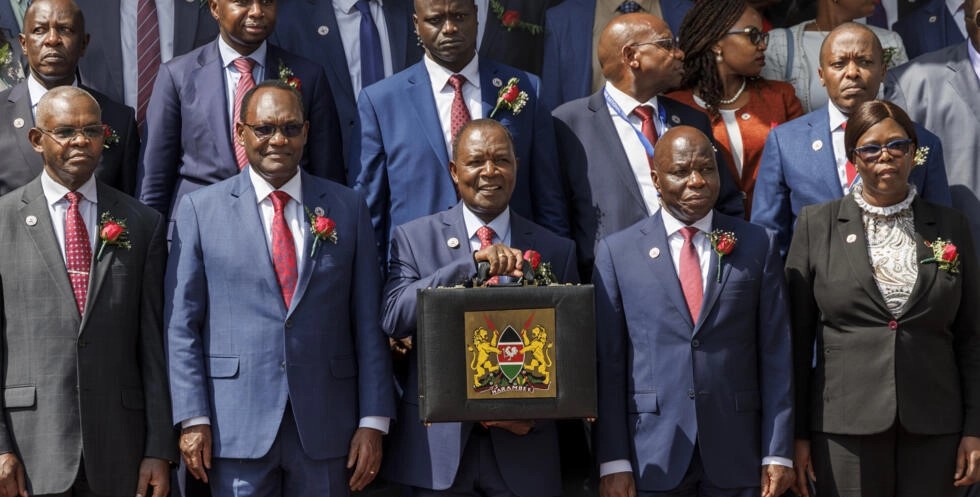(3 Minutes Read)
Kenya’s Treasury Cabinet Secretary Njuguna Ndung’u has tabled the East African economic powerhouse’s biggest ever budget, alongside a contentious finance bill that contains a raft of new or increased taxes.
This is his second Budget in Parliament, in a tradition marked with East African Community member states. According to the EAC Treaty, Finance ministers of the partner states read their budgets simultaneously in the afternoon of the second Thursday of June. In the Sh3.92 billion Budget for the fiscal year 2024/2025, which begins on July 1 to June 30 next year, President William Ruto’s government says it is seeking to reduce the budget deficit to achieve a balanced budget by 2027.
Parliament has already approved the proposed spending plan, but the separate finance bill aimed at filling the coffers of the cash-strapped government could lead to an acrimonious session. The bill – defended by the government as a necessary measure to cut reliance on debt – has drawn sharp criticism from politicians, employed Kenyans, and industry groups.
It proposes a host of tax hikes expected to hit the financial services, manufacturing, and retail sectors. One of the most contentious provisions is the introduction of a motor vehicle tax set at 2.5% of the value of the car and the reintroduction of VAT on bread.
Critics have warned that the new measures will further hit people already struggling to make ends meet as the cost-of-living crisis bites. Similar tax hikes last year led to several protests called by the opposition which degenerated sometimes into deadly street clashes between police and demonstrators.
Kenya is one of the most dynamic economies in East Africa but about one third of the country’s 51.5 million people lives in poverty. Overall inflation has remained stubbornly high, at an annual rate of 5.1% in May, while food and fuel inflation stood at 6.2% and 7.8% respectively, according to central bank data. The government has forecast average GDP growth of 5.2% between 2024 and 2026.
In a report last week, the World Bank said that while Kenya’s real GDP growth had accelerated last year to 5.6% from 4.9% in 2022, it was expected to slow to 5% this year.
Read Also:
https://trendsnafrica.com/kenya-to-spend-usd-31-billion-in-2024-25/
https://trendsnafrica.com/kenya-to-use-part-of-wb-budget-support-to-retire-eurobonds/
The recovery of the key agricultural sector following improved weather conditions drove 2023’s growth, the report said, with tourism also contributing to a stronger performance.
The country’s total public debt amounts to around 10 trillion shillings, or around 70% of GDP, with the International Monetary Fund this week agreeing an additional USD 1.1 billion funding for the nation.





